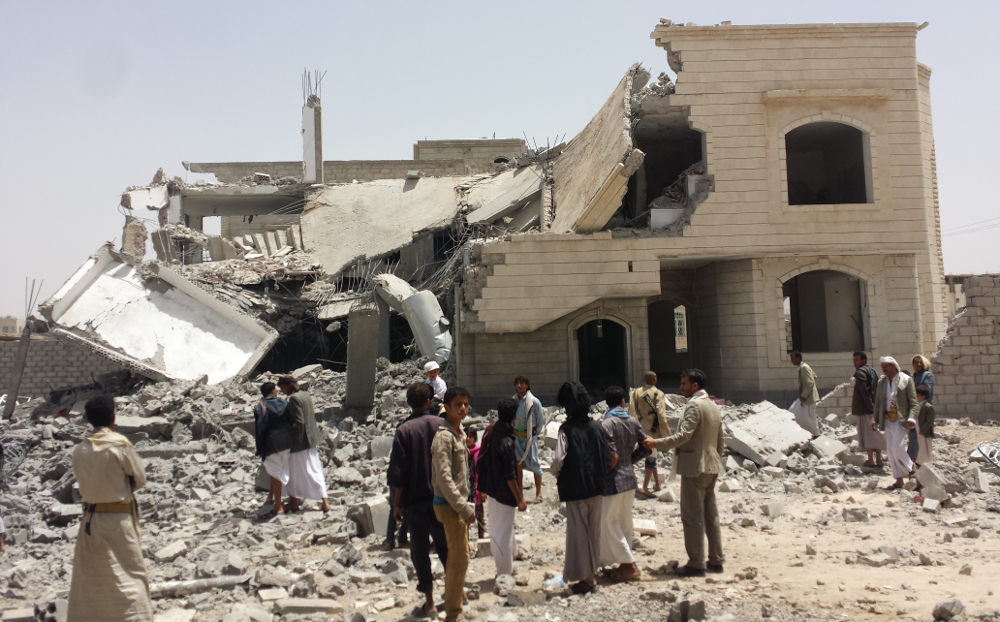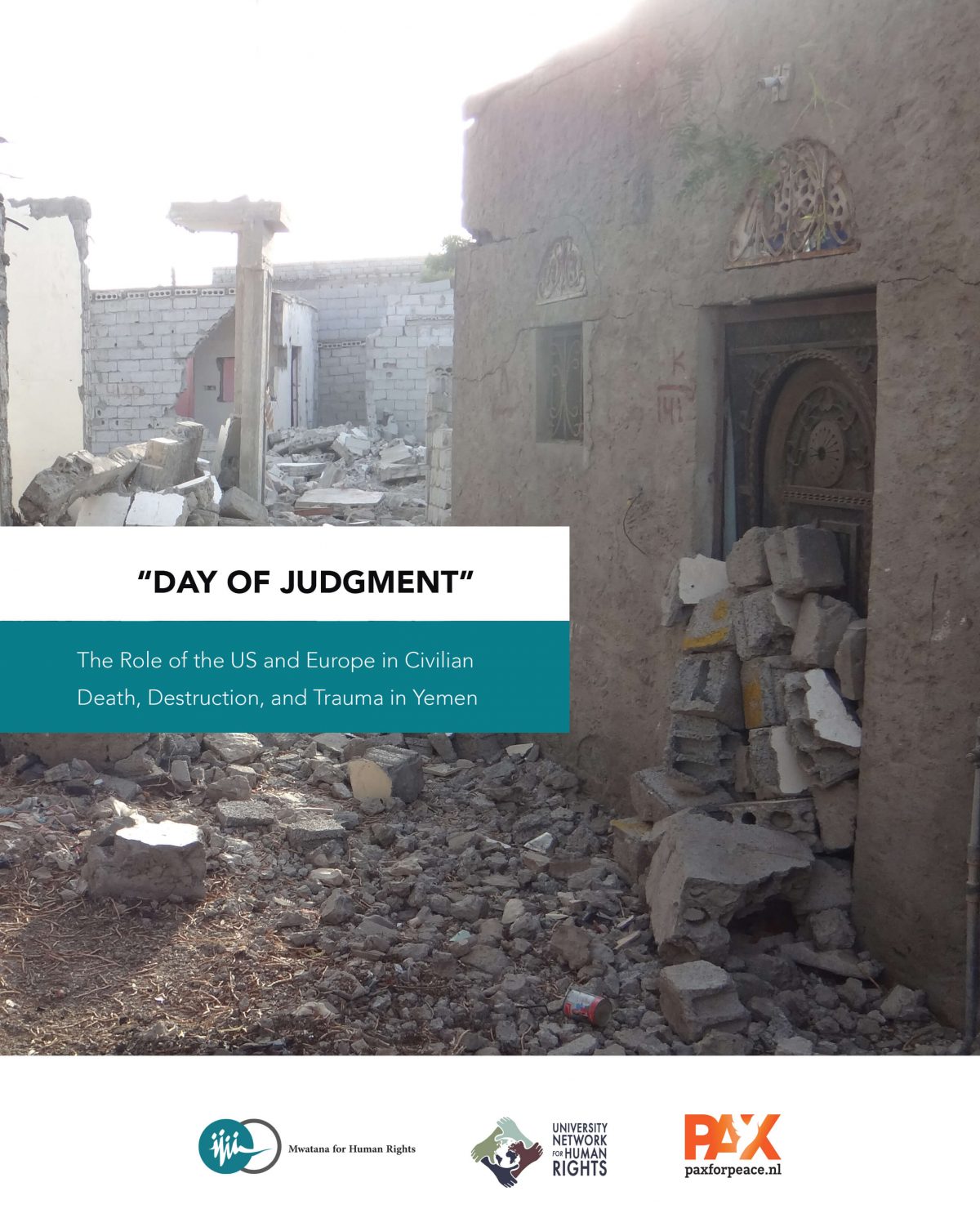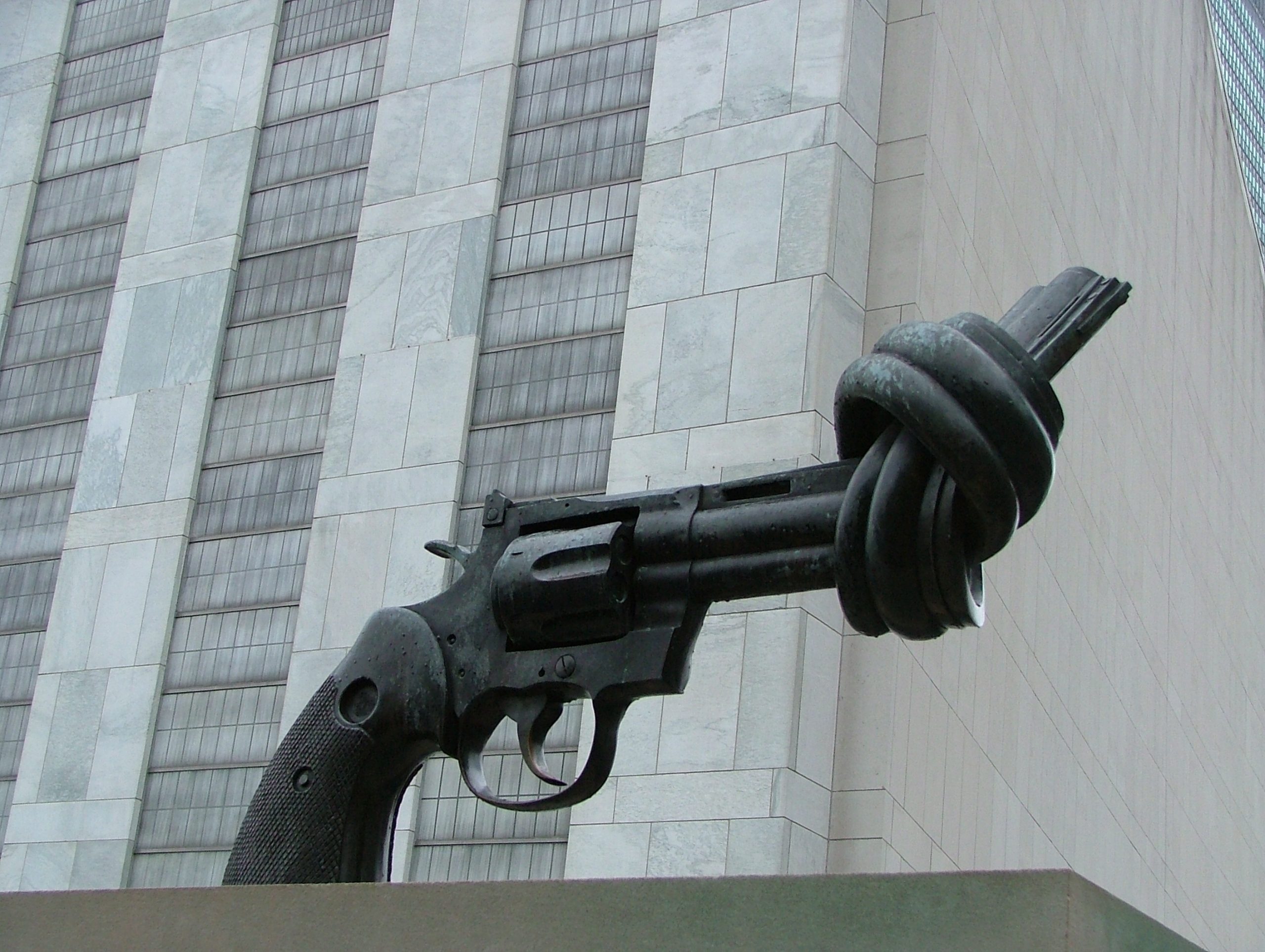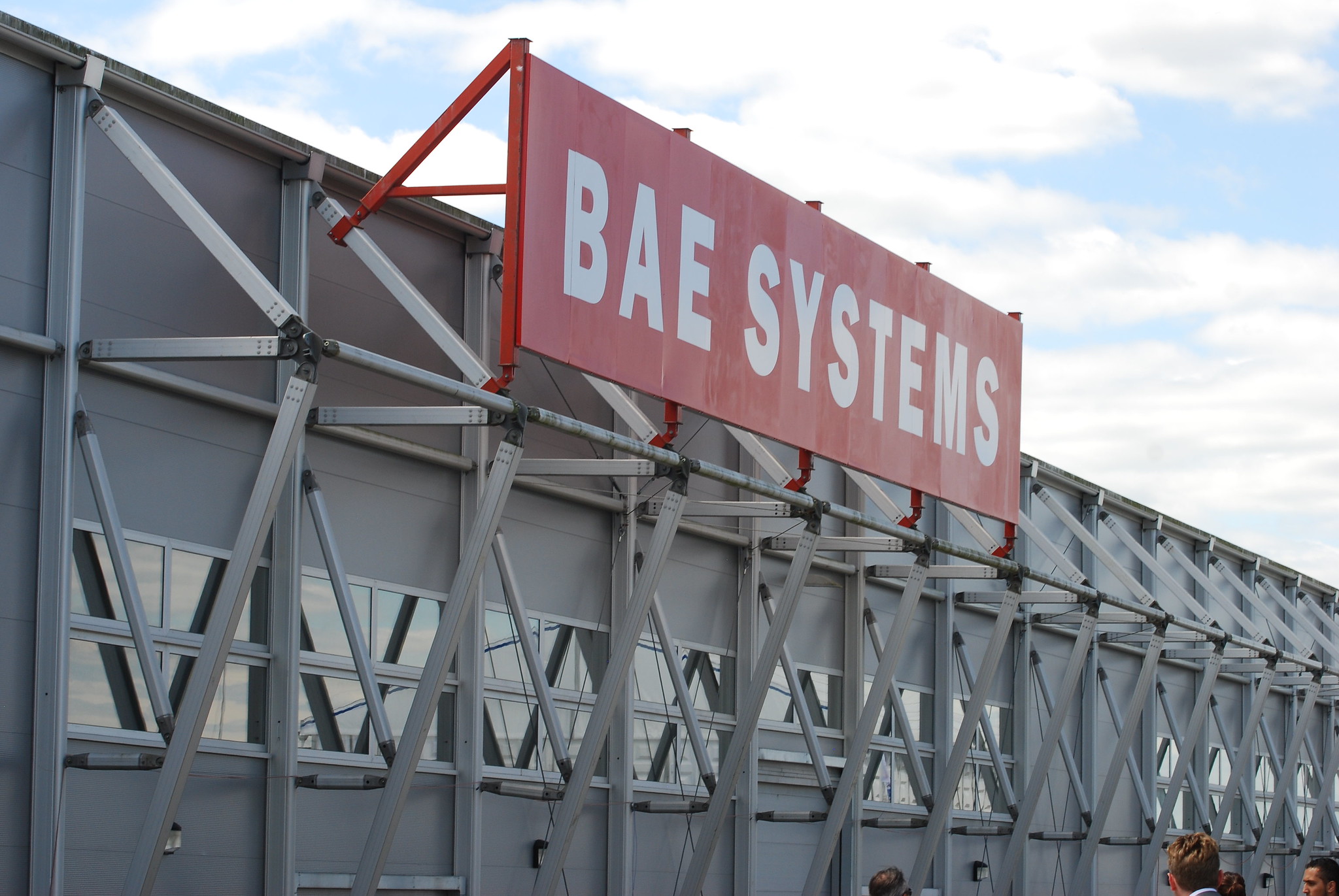Saudi-led coalition air raids in Yemen have frequently targeted civilian gatherings such as weddings and busy market places not near military targets, often with extremely deadly consequences.
The UK government claims it trains the coalition to improve targeting practices and avoid civilian casualties, but there has been no sign of this reducing the deadly air raid toll.
Many of the air raids, including those presented here, appear to be clear violations of international humanitarian law (IHL), an assessment shared by the UN Panel of Experts and NGOs. Some raids have been described as apparent war crimes.
These air raids are only a small proportion of those that have killed and injured civilians, or have struck civilian targets. Almost all are incidents that have been the subject of investigations by UN panels and/or reputable human rights organisations, who have been able to verify key details. The Yemen Data Project provides a full record of Coalition air raids, from the bombing campaign’s start on 26 March 2015 to the present.
Chronology of coalition air raids on civilian targets
2020
- 6 August , 2020: The Saudi/UAE-led coalition carried out an airstrike and dropped multiple bombs on civilian cars on the asphalt road linking the Khab w al-Sha’af district and the Burat al-Enan of al-Jawf governorate. There was about five to ten minutes between the first three bombs, which fell on two civilian cars carrying civilians on a holiday visit. Meanwhile, at about 10:30 a.m., another three bombs hit another civilian car while it was passing about 300 meters away from the site of the previous two vehicles. As a result of the attack, eight civilians, all children, were killed and 15 civilians
were wounded, including eight children and four women. The three civilian vehicles were completely destroyed. (Mwatana, A Tragedy Without Justice) - 15 July, 2020: The Saudi/UAE-led coalition dropped two bombs on the al- Masa’fa village in al-Hazm district, al-Jawf governorate. The first bomb fell on the eastern side of a residential house in which five families were meeting to hold a circumcision ceremony for one of the children. The second bomb fell approximately three minutes later on another residential house about 150 meters north of the previous house. As a result of the air strike, 12 civilians were killed, including seven children and two women, and five children and one woman were wounded. The attack also destroyed the two
homes almost completely and damaged a civilian car that was in the yard of the first house. (Mwatana, A Tragedy Without Justice) - 12 July, 2020: The Saudi/UAE-led coalition attacked, with one bomb, a residential house in al-Asre area, Washaha district, Hajjah governorate. As a result of the attack, 9 civilians were killed, including three women and six children, and one woman and three children were wounded, and the house was completely destroyed. (Mwatana, A Tragedy Without Justice)
- 14 February 2020: At least four explosive devices from at least one aircraft hit a residential area in Al Saida village, Al-Maslub district, Al Jawf governorate. 32 people were killed, the majority of whom were female, including 19 children, and 21 were injured, including 12 children. While the Suaid Joint Incidents Assessment Team (JIAT) claims that the damage was caused by a coalition plane crashing, from collateral damage from an air strike aimed at stopping Houthi militia from retrieving parts of the plane, and from Houthi shelling. However, information received by the UN Panel of Experts found no evidence of Houthi presence in the area, and the debris found was not consistent with Houthi weapons. They concluded that at least one of the explosive devices that hit the area came from a coalition aircraft. (UN Panel of Experts report, January 2021)
2019
- 24 September 2019: Coalition airstrike hits a farmhouse in Qa’ataba, Al Dala; a second airstrike hits a car carrying wounded people. 14 civilians killed, including 7 children, and 4 wounded. (UN Panel of Experts report, January 2020)
- 31 August 2019: Several Coalition airstrikes hit buildings in the compound of Dhamar Community College. One of these was used by the Houthis as a detention centre holding 170 prisoners. 100 people were killed, mostly detainees, and 40 wounded. Saudi authorities claimed the site hosted weapons, but its status as a detention centre was in the public domain and had been reported previously by the UN Panel of Experts. It had been used as a prison for at least two years. While Houthi fighters were present, and possibly some weapons, the UN Panel of Experts concluded it was unlikely that the IHL principles of proportionality and precautions were respected, given the high number of people killed and the direct targeting of several buildings. (UN Panel of Experts report, January 2020)
- 11 August 2019: On the morning of Eid al-Adha, coalition aircraft dropped four bombs on the village of al-Samwil, Mustaba District, Hajjah governorate. The first bomb hit a civilian car in the yard of a house. After about 7 minutes, two other bombs fell about 50 meters from the house, striking those who had survived, who had gathered under a tree after the first bomb hit. The fourth bomb hit a car for paramedics near the house. The attack killed 11 civilians, including seven children and two women, and wounded 17 others, including six children and five women.
- 28 June 2019: Coalition bombs a civilian house surrounded by farmland in Warzan village, Khadir district, Ta’izz. 6 people killed, including 3 children. No evidence of military activity or fighters in the house or nearby. (UN Panel of Experts report, January 2020)
- 24 May 2019: Coalition airstrike hits a petrol station in Maweyah district, Ta’izz. 7 people killed, including 5 children, 2 children wounded. A Houthi checkpoint was nearby (60m), but the Panel of Experts concluded that, given the number of children killed, it was unlikely that the IHL principles of proportionality and precaution were respected. (UN Panel of Experts report, January 2020).
- 16 May 2019: Coalition airstrike destroys a building of 9 apartments in a densely populated area of Sana’a. 5 children allegedly killed, and 78 people wounded, including 30 children and several women. No military presence or activities in the area. (UN Panel of Experts report, January 2020).
- 4 April 2019: Coalition bombs a truck on a road in Al Sawadyah, Al Bayda, less than 1km from the strike on another truck on 16 December 2018 (see below). 4 people killed. As with the previous attack, the truck was transporting water for civilians. (UN Panel of Experts report, January 2020).
- 23 March 2019: A Coalition bomb attack hits a gas station next to a hospital and a pharmacy in Kitaf, Sada’a. 7 people killed, including 4 children, a hospital guard, and a pharmacist, and 6 people injured, including a child and a nurse. Saudi authorities claim the attack was the result of a malfunction in a guided bomb. (UN Panel of Experts report, January 2020).
- 13 February, 2019: The Saudi/UAE-led coalition launched an air strike on a fishing boat at sea, north of Al-Badhia Island, Alluheyah district, Al-Hudaydah governorate, killing 8 civilians, including two children, and wounding 5 others. Those on the boat were in the fishing profession. (Mwatana, Without Accountability)
2018
- 16 December 2018: Coalition bombs a truck on a road in Al Sawadyah, Al Bayda, killing 2 children. The truck was transporting water for civilians. Another such truck was struck nearby on 4 April 2019 (see above). (UN Panel of Experts report, January 2020).
- 30 August 2018: Coalition carried out 5 airstrikes on 4 fishing vessels at sea near Aqban Island, to the west of Al Khawbah, in Al Lihyah district of Al Hudaydah governorate. 7 civilians killed, 2 injured. (UN Panel of Experts report, January 2019)
- 22 August 2018: Coalition aircraft fired two bombs at the farm of Muhammad Hasan Al Akwa’ in Bani Hasan, Abs district, in Hajjah governorate, killing 4 civilians, including 3 children, and wounding another civilian. (UN Panel of Experts report, January 2019)
- 9 August 2018: Coalition bombing hits school bus in Dayhan, Sa’dah. Approximately 43 killed, 63 injured, mostly children. (UN Panel of Experts report, January 2019)
- 23 July 2018: Coalition bombing of water supply system in Nashur, Sa’dah, damages borehole, pipe, and solar panels. (UN Panel of Experts report, January 2019)
- 21 April 2018: Coalition bombing of wedding party in Raqa village of Bani Qays in Hajjah kills 21, including 11 children, 90 wounded including several children. (UN Panel of Experts, January 2019)
- 8 April 2018: Coalition aircraft hit a family gathering outside their home in the Al Mahoul village in the Khidair district of Taizz governorate, killing 12 people, including 5 children and 4 women, and severely wounding one person. (Mwatana, Withering Life, 2019)
- 2 April 2018: Coalition bombing of civilian buildings in Hali district Hudaydah, kills 14 including 7 children, 4 women. (UN Panel of Experts, January 2019)
- 10 January 2018: Coalition aircraft bombed the home of Ali Ma’idh Al Ghamri in Al Shawmiah village in the Ghamr district of Sa’dah governorate. Three siblings killed (aged 8, 10, 18), their mother injured. A witness said: “This is the fourth time that fighter jets targeted civilian homes [in the area], and I am sure that it will not be the last.” (Mwatana, Withering Life, 2019.)
2017
- 10 November 2017: Bombing of residential building in Sa’dah kills 4, injures 4. (UN Panel of Experts Report, January 2018)
- 1 November 2017: Air strike on a night market in Saher district, Sa’dah governorate, kills 31 and injures 26, including 8 children. The Saudi-led coalition claimed that the market was a “gathering point for some armed Houthi militants.” A witness claimed that while two Houthi vehicles were regularly parked about 1km away, the market itself was entirely civilian, comprising hotels, restaurants, and coffee shops. (UN Panel of Experts Report, January 2018)
- 16 September 2017: Air strike on civilian vehicle in Ma’rib kills 12. (UN Panel of Experts January 2018)
- 2 September 2017: Two bombings hit residential buildings of the Al-Maqadhi tribe in Washa, Hijjah governorate, killing 2 women and 1 child, injuring 13. (UN Panel of Experts January 2018)
- 25 August 2017: Bombs dropped from a military aircraft hit several residential buildings in Faj Attan, Sana’a, killing 16 individuals including 7 children, injuring 17 including 8 children. Saudi-led coalition blames a “technical mistake.” This was the third time the coalition had attacked this area, hitting some of the same buildings. (UN Panel Of Experts, January 2018)
- 23 August 2017: Bombing of a hotel in Arhab kills 33 and injures 25. (UN Panel of Experts, January 2018)
- 4 August 2017: Bombing of civilian residence in Sa’dah kills 9 and injures 3. (UN Panel of Experts, January 2018)
- 9 June 2017: Bombing of residential building in Sana’a kills 4 and injures 8. (UN Panel of Experts, January 2018)
- 5 April 2017: Fishing vessel shot by helicopter gunfire off coast at Hodeydah, four killed. (UN Panel of Experts, January 2018)
- 16 March 2017: Maritime helicopter attack against Somali migrant boat carrying 146 passengers kills 42 people and injures 34. (UN Panel Of Experts, January 2018)
- 15 March 2017: Helicopter from nearby coalition warship fires on fishing vessel at Al Durayhimi, 15 miles from Turfah island, killing 2, injuring 5. (UN Panel Of Experts, January 2018)
- 15 March 2017: Almost immediately afterwards, fishing vessel in same location struck by missile from a coalition warship, killing 5 and injuring 3. (UN Panel Of Experts, January 2018)
- 3 February 2017: Helicopter fires on fishermen’s tents and boats at island off coast of Hodeydah, killing 6 and injuring 7. (UN Panel Of Experts, January 2018)
2016
- 12 December 2016: Submunition from a cluster bomb strikes civilian home in residential area of Midi district, Hajjah governorate, killing 15, including 9 children and 4 women, injuring 7 (2 children and 5 women) (Mwatana, Day of Judgement, May 2019)
- 8 October 2016: Saudi-led coalition bombs a funeral hall where 1,000 mourners were gathered for the funeral of a family member of a Houthi leader. 132 people were killed, and 695 injured. Coalition planes carried out 2 strikes, one a few minutes after the other. The attack may have targeted Houthi leaders expected to attend the funeral, but the UN Panel of Experts for Yemen concluded that the very high number of civilian casualties should have been anticipated. They were “unconvinced” that the requirement of proportionality under IHL had been met. (UN Panel of Experts Report, January 2017)
- 8 October 2016: Bombing of civilian homes in residential area of Bajil District, Hudaydah governorate. 6 killed (inc. 4 children and a pregnant woman), 1 injured. (Mwatana, Day of Judgement, May 2017
- 24 September 2016: Bombing of a residential complex in Ibb killing 9 people, more than 7 injured. (UN Panel of Experts Report, January 2017)
- 22 September 2016: Bombing of a water pump factory in Sana’a (repeat strike). (UN Panel of Experts Report, January 2017)
- 21 September 2016: Bombing of a residential neighbourhood in Hawak District, Hudaydah governorate, during a funeral, kills 23 (including 5 children and 2 women) and injures 46 (including 3 children and 19 women). (Mwatana, Day of Judgement, May 2019)
- 20 September 2016: Bombing of a civilian pick-up truck in Al Mattmah District, Al Jawf governorate, kills 15 (12 children and 3 women), and injures 3 children. (Mwatana, Day of Judgement, May 2019)
- 13 September 2016: Bombing of a water pump factory in Sana’a. (UN Panel of Experts Report, January 2017)
- 10 September 2016: Attack on a water well in Beit Saadan, hitting workers drilling for water and civilian bystanders, killing 30 (BBC report, sourced from a UN humanitarian coordinator) (UN Panel of Experts Report, January 2017)
- 15 August 2016: Attack on MSF run Abs Hospital, Hajjah, killing 19 people. (UN Panel of Experts Report, January 2017)
- 13-14 August 2016: Airstrike on a school in Northern Yemen killing at least 10 children. (UN Panel of Experts Report, January 2017)
- 9 August 2016: Bombing of a food production facility in Sana’a killing 10 people (repeat strike). (UN Panel of Experts Report, January 2017)
- 25 May 2016: Bombing of a civilian residence in Lajih, 6 people killed. (UN Panel of Experts Report, January 2017)
- 25 March 2016: Attack on a civilian residence in Ta’iz, killing 10 people. (UN Panel of Experts Report, January 2017)
- 15 March 2016: Attack on a civilian market place in Hajjah Province killing 106 people. (UN Panel of Experts Report, January 2017)
2015
- 25-26 October 2015: Strikes on MSF hospital in Haidan repeatedly over 24-hour period. Hospital’s GPS coordinates had been regularly shared with the Saudi-led coalition. (From legal documents containing statements of fact, provided by CAAT to the High Court and Court of Appeal as part of CAAT’s court case against the UK government.)
- 28 September 2015: Airstrikes on a wedding party in Wahijah village of Mokha killing at least 135 people. (Legal documents)
- 14 September 2015: Bombing of Wa’lan agricultural complex in Bilad Ar-Rus district, Sana’a governorate, kills 8 (including 2 children, 4 women), injures 12 (including 6 children, 2 women). (legal documents)
- 30 August 2015: Al Sham Water Bottling Factory in Abs hit with an airstrike killing 14 civilians including 3 children and wounding 11. (Human Rights Watch, What military target was in my brother’s house?, November 2017.)
- 28 August 2015: Bombing of civilian homes in residential neighbourhood of Al Dhilar District, Ibb governorate, kills 5 (including a child and a woman). (Mwatana, Day of Judgement, May 2019.)
- 17 August 2015: Airstrikes and shelling of the port at Hudaydah damaging the main lifeline for the imports of basic goods, medicines and fuel and killing 65-70 people. (UN Panel of Experts Report, January 2016).
- 15 August 2015: Cluster bombing of a civilian home in residential area of Haradh District, Hajjah governorate, kills 10 (including 6 children, 3 women), injures 6 (4 children, 1 woman). (Mwatana, Day of Judgement, May 2019.)
- 24 July 2015: Coalition forces bombed the residential compound of a steam power plant housing workers and their families in Mokha, killing at least 63 civilians and injuring 50. (Amnesty International, Nowhere safe for civilians, August 2015.)
- 19 July 2015: Airstrike in Yareem partially damaging and in some cases destroying 11 residential homes and a two-storey building killing 16 civilians including 9 children, 200 metres away from a military base. (Human Rights Watch, What military target was in my brother’s house?, November 2017.)
- 12 July 2015: Airstrike on a residential neighbourhood in Sana’a killing 23 people all from the same family including 14 children. (Human Rights Watch, What military target was in my brother’s house?, November 2017.)
- 6 July 2015: Coalition forces bombed a livestock market killing 40 people and injuring many more. (Amnesty International, Nowhere safe for civilians, August 2015.)
- 4 July 2015: Coalition aircraft bombed the market place at Muthalith Ahim crowded with people breaking the Ramadan fast, killing at least 65 people and wounding 105. A nearby Houthi checkpoint was not hit. (Human Rights Watch, What military target was in my brother’s house?, November 2017.)
- 4 June 2015: Four consecutive airstrikes on a tight-knit cluster of small houses, killing 11 people in Sa’ada. All victims were children and women. No evident military objective. (Amnesty International, Bombs fall from the sky day and night, October 2015.)
- 3 June 2015: Airstrikes destroys cluster of nine houses; several consecutive airstrikes hit the village and the strikes continued while rescue efforts were underway. At least 55 residents killed including 35 children and 11 women. (Amnesty International, Bombs fall from the sky day and night, October 2015.)
- 26 May 2015: Family home in Dar Saber village, Ta’iz is bombed with 8 family members (including 6 children) killed, 7 injured. (Amnesty International, Nowhere safe for civilians, August 2015.)
Sources
- UN Panel of Experts Reports to the UN Security Council, January 2016, January 2017, January 2018, January 2019, January 2020.
- Amnesty International, Nowhere safe for civilians, 18 August 2015.
- Amnesty International, Bombs fall from the sky day and night, 7 October 2015.
- Human Rights Watch, What military target was in my brother’s house?, 26 November 2015.
- Campaign Against Arms Trade, legal documents containing statements of facts, provided by CAAT to the High Court and Court of Appeal as part of CAAT’s court case against the UK government.
- Mwatana, Day of Judgement, 5 May 2019.
- Mwatana, Withering Life, 16 July 2019.
- Mwatana, Without Accountability, 19 October 2020.
- Mwatana, A Tragedy Without Justice, 29 September 2021.








